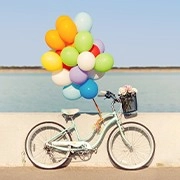Visual Storytelling

Have you ever watched a movie scene that moved you deeply, even without much dialogue? That's the magic of cinematography at work. Cinematography—the art and technique of capturing images on film or digital media—plays a vital role in storytelling.
It shapes how we see, feel, and understand the story unfolding on screen. In this article, we'll explore why cinematography is so important in storytelling and how it transforms simple narratives into unforgettable cinematic experiences.
What Is Cinematography? More Than Just Filming
Cinematography is often thought of as simply "shooting a movie," but it's much more than that. It involves decisions about lighting, camera angles, lens choices, composition, and movement. Each of these elements contributes to how a story is visually presented and how viewers connect emotionally with the characters and events. Cinematographers, sometimes called directors of photography, work closely with directors to bring the story's vision to life in vivid and meaningful ways.
Lighting: Setting the Mood and Tone
Lighting is one of the most powerful tools in cinematography. It can evoke emotions and emphasize particular story elements. Soft, warm lighting may create a feeling of comfort or romance, while harsh shadows and low lighting might build suspense or mystery. Changes in lighting throughout a film can reflect shifts in mood, character development, or thematic depth. Understanding lighting's role helps viewers appreciate how cinematography guides their emotional journey.
Camera Angles and Composition: Guiding the Viewer's Eye
The way shots are framed and the angles chosen can dramatically affect storytelling. High-angle shots can make characters appear vulnerable, while low-angle shots often suggest power or dominance. Composition—the arrangement of objects and characters within the frame—helps focus attention and conveys relationships or themes visually. These choices influence how viewers interpret scenes without explicit explanation, making cinematography a silent but potent storyteller.
Camera Movement: Adding Dynamism and Perspective
Moving the camera is another technique that shapes storytelling. Smooth tracking shots can immerse viewers in a scene, while sudden zooms or shaky handheld shots might increase tension or realism. The movement can mimic a character's emotions or point of view, creating a deeper connection between audience and story. Thoughtful camera movement adds rhythm and flow to a film, enhancing both narrative clarity and emotional impact.
Color Palette: Painting the Story's Emotion
Colors used in cinematography are carefully chosen to reinforce the story's tone and themes. Vibrant colors might communicate joy or chaos, while muted tones can suggest melancholy or introspection. Color grading during post-production adjusts these palettes to unify a film's look and strengthen storytelling. This subtle yet crucial aspect helps create a memorable visual identity for the movie.
Cinematography and Character Development
Beyond setting mood and atmosphere, cinematography helps reveal characters' inner worlds. Close-up shots expose subtle expressions, while wide shots place characters in their environment, indicating isolation or connection. The way characters are lit and framed can reflect their emotional states or transformations. This visual storytelling complements the script and acting, offering a richer, more layered narrative experience.
Collaborative Art: How Cinematographers and Directors Work Together
Cinematography is not created in isolation. Directors and cinematographers collaborate closely to ensure the visual style supports the story's goals. The director's vision guides the cinematographer's choices, but the cinematographer's expertise influences how that vision is realized visually. This teamwork is essential to producing a film where story and image are perfectly intertwined, resulting in a powerful storytelling medium.
Examples of Cinematography's Impact in Famous Films
Films like "Blade Runner 2049" and "The Grand Budapest Hotel" are celebrated not only for their stories but also for their stunning cinematography. "Blade Runner 2049" uses lighting and composition to build a futuristic, haunting world, while "The Grand Budapest Hotel" employs vibrant colors and symmetrical framing to create a whimsical, stylized atmosphere. These examples highlight how cinematography elevates storytelling to an art form.

Conclusion: How Does Cinematography Influence Your Viewing Experience?
Next time you watch a film, pay close attention to how it looks—the lighting, camera angles, colors, and movement. These visual choices carry meaning beyond the script and dialogue. Cinematography is a vital storytelling tool that shapes your emotions and understanding of the narrative. What is a movie you remember vividly because of its cinematography? Share your thoughts and favorite examples—you might see films in a whole new light!

 · Movie Team
· Movie Team